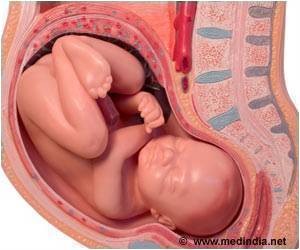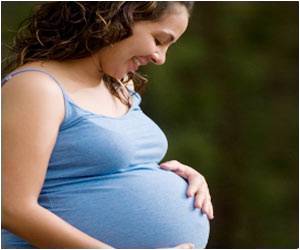Stillbirth rates continue to increase around the world though it can be prevented by better monitoring and treatment methods for pregnant women.

Leading Causes of Stillbirth
1. Termination of Pregnancy: Dr. K.S. Joseph and colleagues studied data on stillbirth numbers from British Columbia, Canada and found that termination of pregnancy- Was a key factor in the rise in stillbirths
- Reduction in congenital and birth defects
- In high-income countries- 10-25% of stillbirths are caused by infections.
- In low-income groups- 50% of stillbirths are caused by infections.
- Syphilis is one of the most dangerous diseases that causes stillbirth though it can be easily detected and treated.
- Malaria causes extensive placental damage and leads to stillbirths
- Chlamydia and Gonorrhea infections also increase the risk for stillbirth, even years after the disease has subsided.
- Placental lesions were considerably higher among stillbirths than live births:
- Retro-placental hematoma - 23.8% in stillbirth - 4.2% live births
- Placental inflammation - 30% of stillbirths - 12.8% in live births
- Single umbilical artery - 7.7% stillbirth - 1.7% live birth
- Fetal vascular thrombosis- 23% of stillbirth - 7% of live birth
- Shoulder dystocia
- Postpartum hemorrhage
- Retained placenta
- Clinical chorioamnionitis
5. Maternal Obesity: Jacob L and colleagues published their study titled “ Risk of stillbirth in pregnant women with obesity in the United Kingdom” in The Journal Obstetrics Research in Clinical Practice. This study found that obese or overweight pregnant women had an increased risk of stillbirth in the U.K.
6. Genetic Defects in the Baby: A large number of genetic defects contribute to stillbirth.
7. High Blood Pressure or Pre-Eclampsia in the Mother: Some mothers suffer from high blood pressure during pregnancy and careful monitoring should be carried out to prevent stillbirth.
8. Umbilical Cord Complications: The umbilical cord complications include twisting of the cord around the fetus’ neck which can prove to be fatal during childbirth.
This is an indication that greater awareness and preventive strategies about stillbirth should be created among women. The taboo associated with stillbirth in certain cultures continues to plague this condition and work against change. Mothers, especially young mothers are blamed solely for the stillborn leading to further maternal complications that can affect future pregnancies. Working with mothers to better manage their pregnancy is a key factor in decreasing stillbirths.
Preventing Stillbirth
1. Breaking the Taboo: The taboo associated with stillbirth should be removed by creating better awareness about the risk factors that lead to stillbirth. This will help women step out of their situation and to seek timely help.- Infection
- Birth control strategies
- Sexual health
- Smoking
- Consumption of alcohol
- Drug abuse
- Adequate exercise
Women who have had stillbirths are normally devastated as they have waited long months for their baby’s birth. Many hospitals and birth registries encourage parents to register their stillborn child so they get a chance to name their baby. This helps parents find closure and gives them the pleasure of having done something for the baby.
4. Encourage Midwives: Midwives play a vital role in monitoring maternal and fetal health during pregnancy. They bring in years of experience and training which will help immensely during childbirth and labor. This dwindling paramedical support group should be actively encouraged as a conscious means to bring down stillbirth numbers.
Fetal movement should be closely monitored by mothers and reduction or absence in movements should be reported immediately to the gynecologist or the midwife. Though there is no need for paranoia, getting regular checkups during your pregnancy will help avoid unnecessary stillbirth incidents. Conducting an autopsy for stillbirths will aid in understanding the reasons behind the stillbirth, preventing future untoward incidences during a subsequent pregnancy.
There are active steps that need to be taken to lower incidences of stillbirth. The reassuring factor in this regard is the aim by World Health Assembly to reduce stillbirth by 2035.
References:
1. http://www.cdc.gov/ncbddd/stillbirth/facts.html2. http://www.nhs.uk/conditions/stillbirth/pages/causes.aspx
3. K.S. Joseph, Brooke Kinniburgh, Jennifer A. Hutcheon, Azar Mehrabadi, Melanie Basso, Cheryl Davies, RN and Lily Lee “Determinants of increases in stillbirth rates from 2000 to 2010”, CMAJ, May 2014
4. Jacob L, Kostev K, Kalder M, “ Risk of stillbirth in pregnant women with obesity in the United Kingdom”; Obstetric Research in Clinical Practice, 2015 Dec
5. MacDorman MF, Reddy UM, Silver RM, “ Trends in Stillbirth by Gestational Age in the United States, 2006-2012.”; Obstetrics and Gynaecology, December 2015
6. Gold KJ, Mozurkewich EL, Puder KS, Treadwell MC. “Maternal complications associated with stillbirth delivery: A cross-sectional analysis.”; Journal of Obstetrics and Gynaecology; Oct 2015
7. Halit Pinar, Robert L. Goldenberg, Matthew A. Koch, Josefine Heim-Hall, Hal K. Hawkins, Bahig Shehata, Carlos Abramowsky, Corette B. Parker, Donald J. Dudley, Robert M. Silver; “Placental Findings in Singleton Stillbirths”; Obstetrics and Gynaecology, 2014
8. Goldenberg RL1, McClure EM, Saleem S, Reddy UM. “Infection-related stillbirths”; Lancet, 2010.
Source-Medindia












